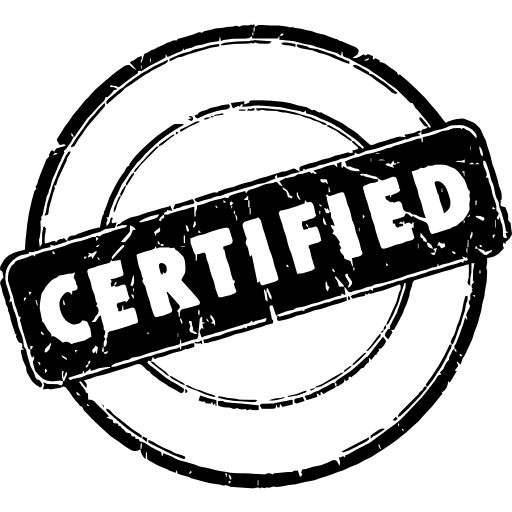17A. National Training Framework
If we look back at the last chapter, there were certainly intended initiatives that were encouraged by the government. Mainly it focused on the training methodology and the development because of it which can enhance the performance of British industries. In addition to it, it also is helpful in reducing the gap between skills. One of the important bridges in this context, especially behind political momentum, considering about the training and education related to competency movement.
Its promotion is heavily done initially by Training and Enterprise Directorate. In the current times, that same promotional aspect is seen by 2 bodies.
- Department for Education and Employment
- Learning and Skills Council
As we will study further in this section, you will look through 3 important initiatives that the government supports whose competence and relevance is towards NVQs.
LSCs
This is also called Learning and Skills Councils. This initiative has been a successful replacement for TECs or Training and Education Councils. It has been based on Learning to Succeed by White Paper in 1999. Responsibilities related to funding and planning was that of TECs. They ensured all about it for 16 educational sectors except university sector. Development strategies were designed on national workforce platform by LSC. This again was on the foundation of 3 prime objectives.
Those 3objectives are:
- Making sure that there is increase in demand from both individuals and employers related to training and education for that training
- Flexibility and receptivity enhancement so that the requirements in business also improves
- Administering intelligence in the labor market
Now, there is also a fact related to this framework where most employees do not even have an inkling related to the difference between TECs and LSCs. This came to light on 2003 due to the reports presented by CIPD. On further reading about the survey report you will find that when an employer or owner wishes to know about qualifications like NVQs, they prefer going directly to LSCs.
SSCs
It is also known as Sector Skills Councils. When NTOs or National Training Organisations (older body) was replaced, it was done by SSC. NTOs were basically the combination of the older body with that of the over expanded bodies dealing with informative and training section of employers.
It was mandatory that a proper license has to be acquired by SSC so that they can begin their working procedure after undertaking the responsibilities from NTO. It was from SSDA or Sector Skills Development Agency. If you take a closer look during 2003, you will find that SSC was given license 15 times from their initiation. It was also seen that their operation did cover the workforce of half of UK.
As per their swiftness in giving away excellent performance, it was thought that SSC would be able to capture at least 84% of UK’s workforce by2004s end.
It was ensured that similar to the principles and essentialities of NTO, SSC will also set few standards on the occupational level to empower workforce. One of the common examples of their standards is the implementation of NVQs. The primary motto of this input was to ensure that skills shortage declined to certain low level and there is upliftment in training procedure.
IIP
This is an abbreviated form of Investors in People. This is one of the initiatives by government hat as introduced in the year 1991. Even after so many years, its impact has been strong as during its time of initiation.
Still, from that time, there have been many changes noticed on Iip. Explanation of this initiative, or better said, its details have been extremely less if we see the current version. The focus of this initiative is less on the process from which it gets its credit and more on its result.
There are mainly 4principles on which Iip is based on.
- Evaluation
- Action
- Planning
- Commitment
On these4 principles, there are additional 12 criteria which make it complete in entirety. There are a number ofinternal processes that a company has to go through so that they can meet the set standards evaluated by IiP UK.
This indeed isa crucial step as their accreditation depends upon this procedure fulfillment. Again in this case there is a specific motto that Iip wishes to be implemented by every organization in the UK. That aspect of keeping such benchmark is every company following organized development and training policies. On following this, one can see improvement in meeting goals related to business.
There have also been arguments regarding the set target in the initial phase. This was considered to be one of the most ambitious statuses that Iip wanted to implement in the business industries. However, there were contradictory statements as well as thinking from Ruth Spellman. It was in April 2002 when this Chief Executive of Investors in People UK presented a report highlighting the standards that were met by 25, 000 companies. A deep analyzation on his context showcased it to be nearly a quarter of the entire workforce in UK.
It was as per her analyzation that if the number of registered companies promising their commitment with Iip, there will be an increase in percentage of the working population. This change will ensure that 1/4th of the total workforce hikes up to 1/3rd.
When we talk about Iip and commitment towards it, there are 2 factors that need to be kept in mind.
- Effort
- Time
It is imperative that the relation of both of these factors is utilized in an efficient way in the working procedure. Only after that can the development be seen.
Again there have been a number of debates regarding Iip status recognition. If seen from the positive side, it has been seen that commitment towards HR development has hiked considerably. In addition to this, the development was seen in the procedure used in the company. This brought a noticeable change in the gains related to perceived performance.Rather than sticking to it, there are many advantageous sectors where this study showed positive results, even if many companies can notidentify it.
Negative too few positive sides
Where there are positive sides of Iip, there are few limitations too. In most cases, it has been seen that the concentration of this procedure is more towards NVQs, which is a formal qualification. The areas of neglect were mainly those falling on informal development. Few of the studies were successful in highlighting the fact how against bureaucratic approach did many companies have to struggle.
Related research studies
- It was Ram, who in the year 2000, did present a stamp of approval to the above statement that Iip did work on a status which definitely works in keeping its commitment to training enhancement. But there was also a contradictory statement by Down and Smith who presented their convincing argument related to the benchmark for the set standards.
- A new study on this topic was presented by Grugul is and Bevitt. This time (2002) it was based on hospital trust. As per their report, it was found that even before the existence of its certification, most of the initiatives regarding soft HR were present.Apart from these findings, there were many other studies too.
- One of the report researches by Hammond was used and finally carried out by another of the researchers named by Hoque. The new findings that Hoque made were of certain workplaces (basically a minority amongst the totality).
It highlighted that those companies even after getting the certification from Iip, they did not follow the best practices which they assured to abide as per the standards set by the former.He agreed to the fact that the training procedures were way better in huge enterprises. Still, most do not consider to look in the direction of lack in training opportunities.
Links of Previous Main Topic:-
- Introduction leadership and motivation
- Managing absence and attendance
- Interactive skill 3 appraisal interviewing
- Strategic aspects of development
- Context competence competencies
- National training framework
Links of Next HR Management Topics:-
- The context of the competence movement
- Competences and nvqs
- Behavioural competencies
- Summary propositions general discussion topics and further reading in context competence and competencies
- Learning and development
- Career development
- Strategic aspects of employee relations
- Recognition and consultation






















